Spring and Summer 2021
Lockdown 2021
Work carried on as usual during lockdown but greater care was taken with the power tools. We started on an area on our Southern boundary and coppiced some badly damaged Sweet Chestnut. The damage had been caused by both Squirrel and Roe Deer. It is an amazing part of our plot, very secluded, sheltered and has a steep, bare mud bank which faces south.
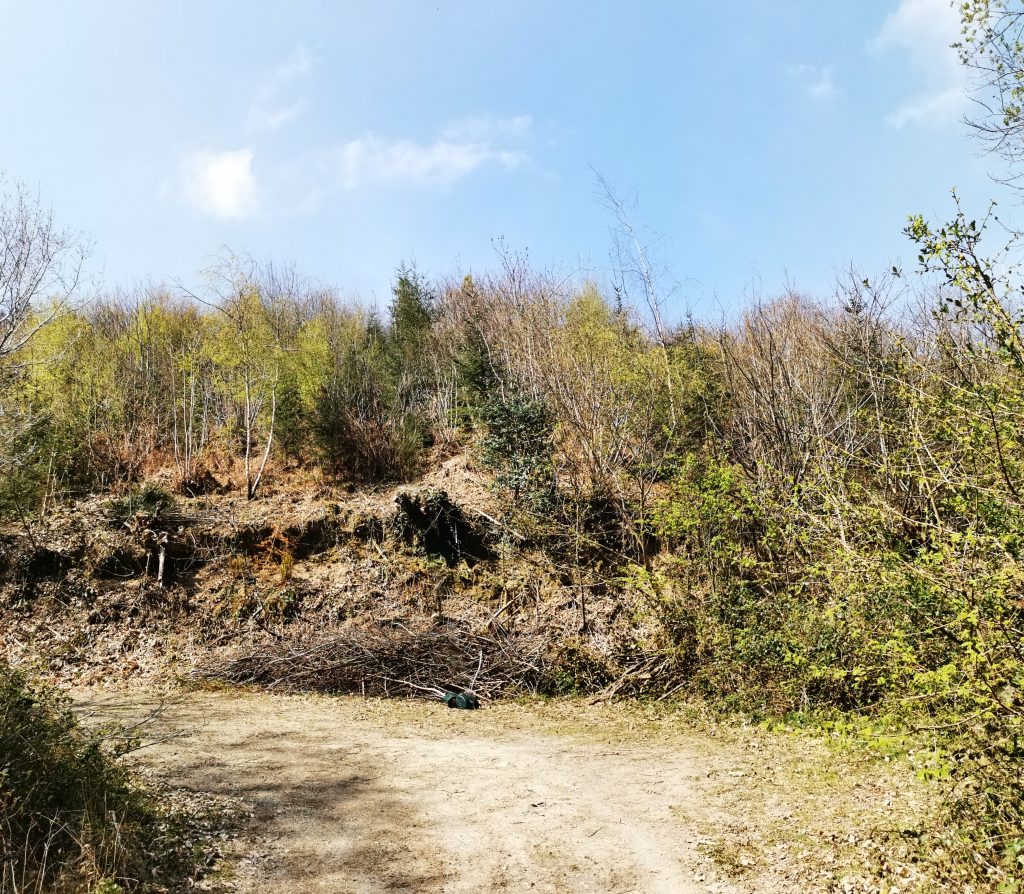
This is a great habitat for invertebrates and quite unique in our plot. It is also a sun trap with its Southerly aspect. We plan to coppice some more of these damaged Sweet Chestnut this winter, there are at least six more to do in this area.
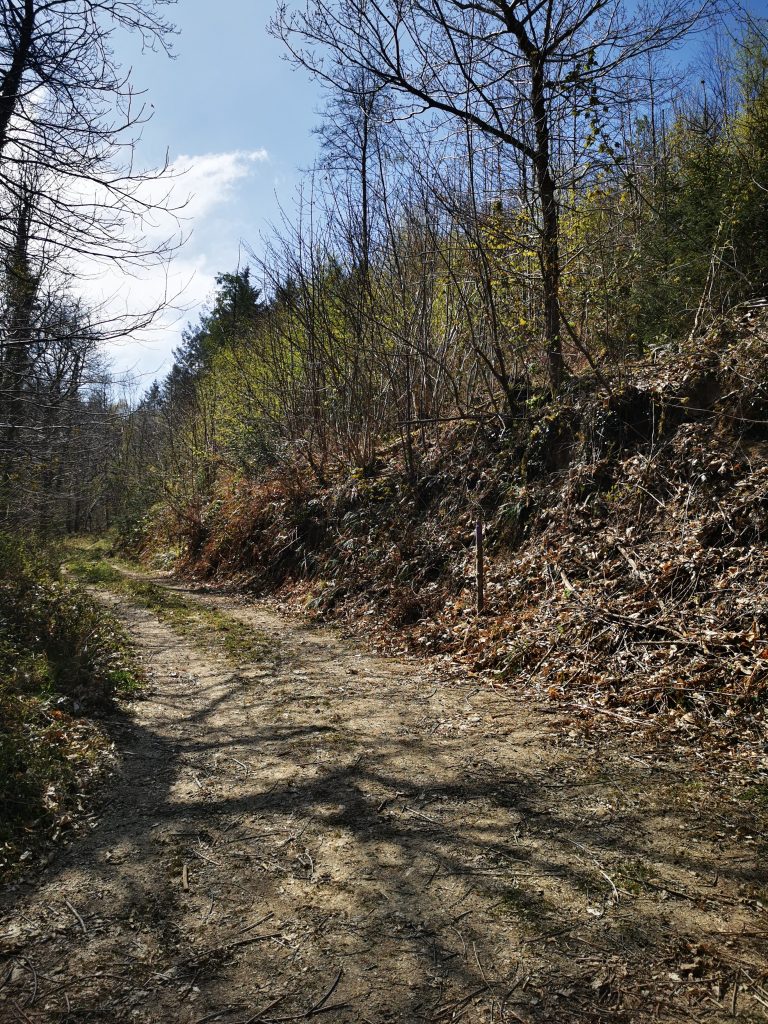
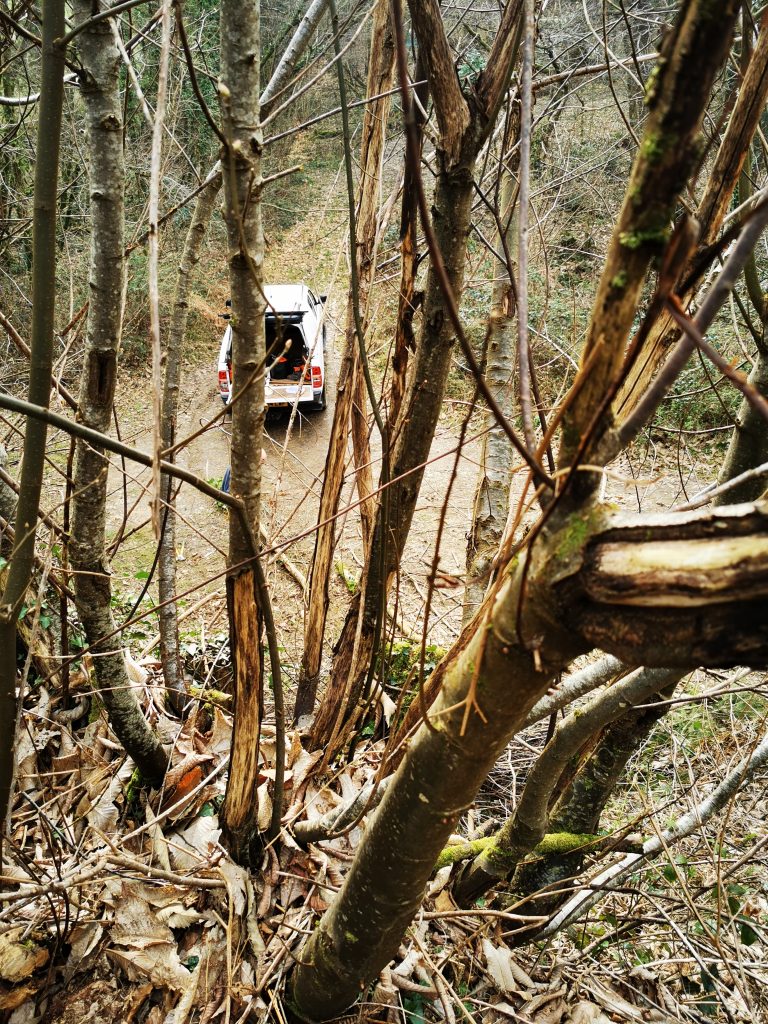
The plan is to open up this bank area and maintain the growth of Hazel and Chestnut around the length of our lower track. This is to provide Wildlife with a clear corridor to move through. We also coppiced some Hazel, some of the better stems were sold locally as bean poles. The deer damaged Sweet Chestnut stems were still utilised for stakes.
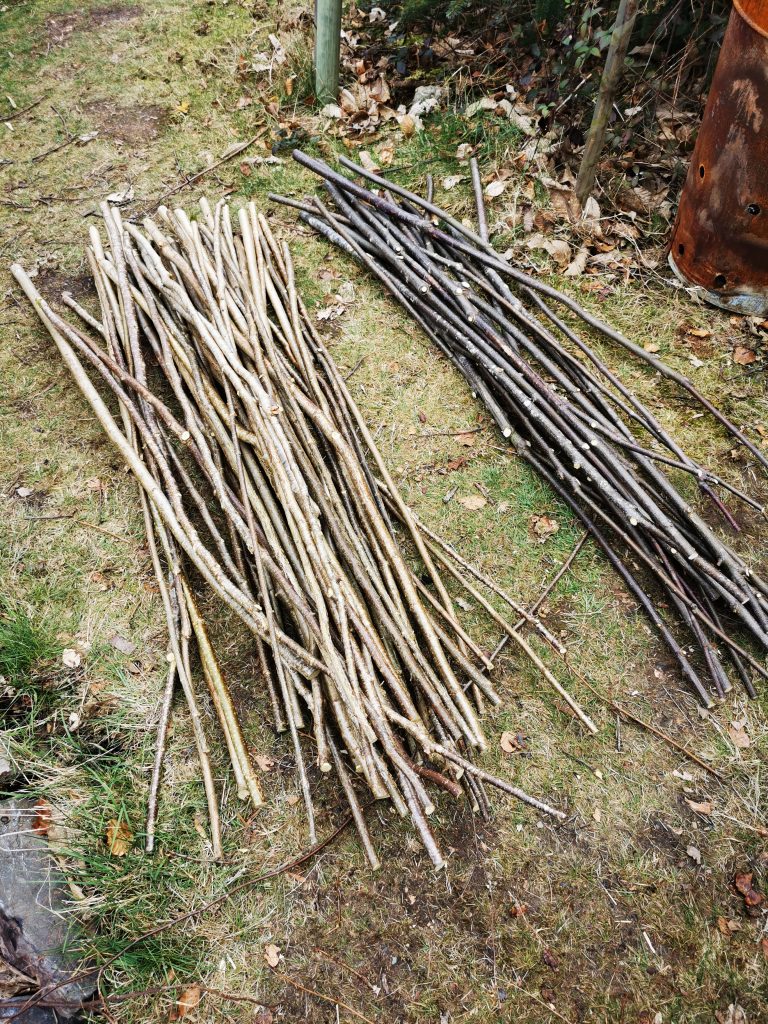
Bumper spawning
Compared to other areas our frogs and toads seemed to arrive later this year. It wasn’t until 15th February that I noticed our first frogs in the top pond. Frog spawn started appearing from the 17th and toad spawn from the 22nd.

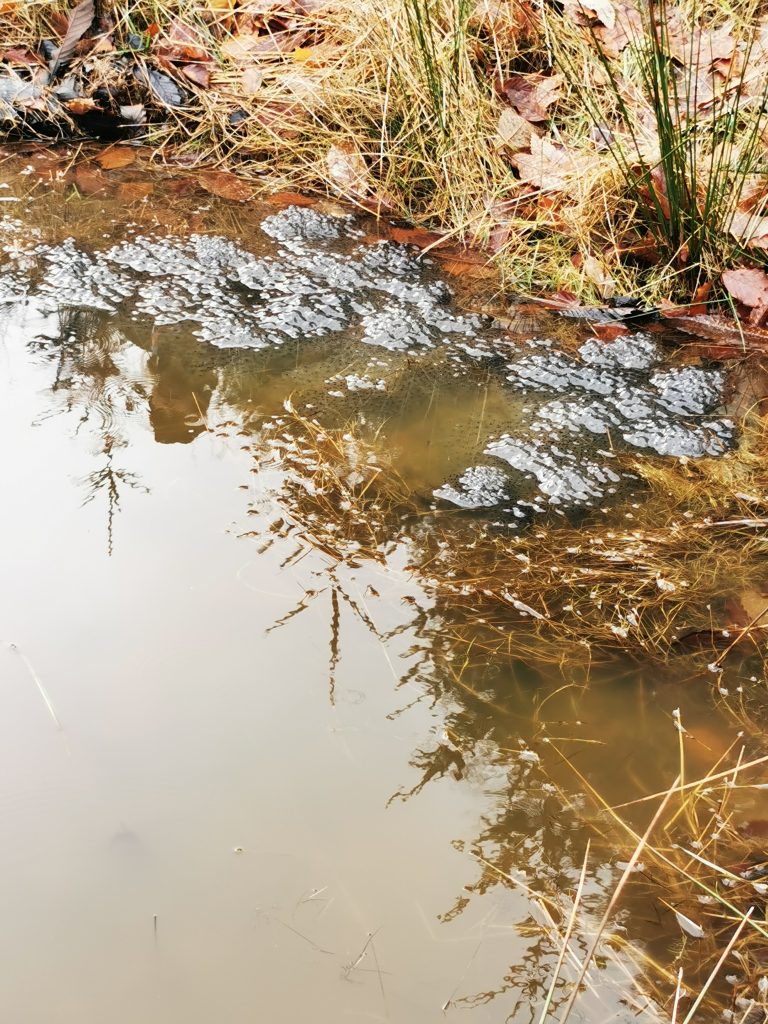
Dead hedging
At the beginning of March we continued with a stretch of dead hedging to the Southern edge of our Douglas fir stand. Dead hedging is a great way of utilising cut brash ( branches and other cut debris). It provides essential habitat and shelter for many species. Wrens love to forage and nest in them.
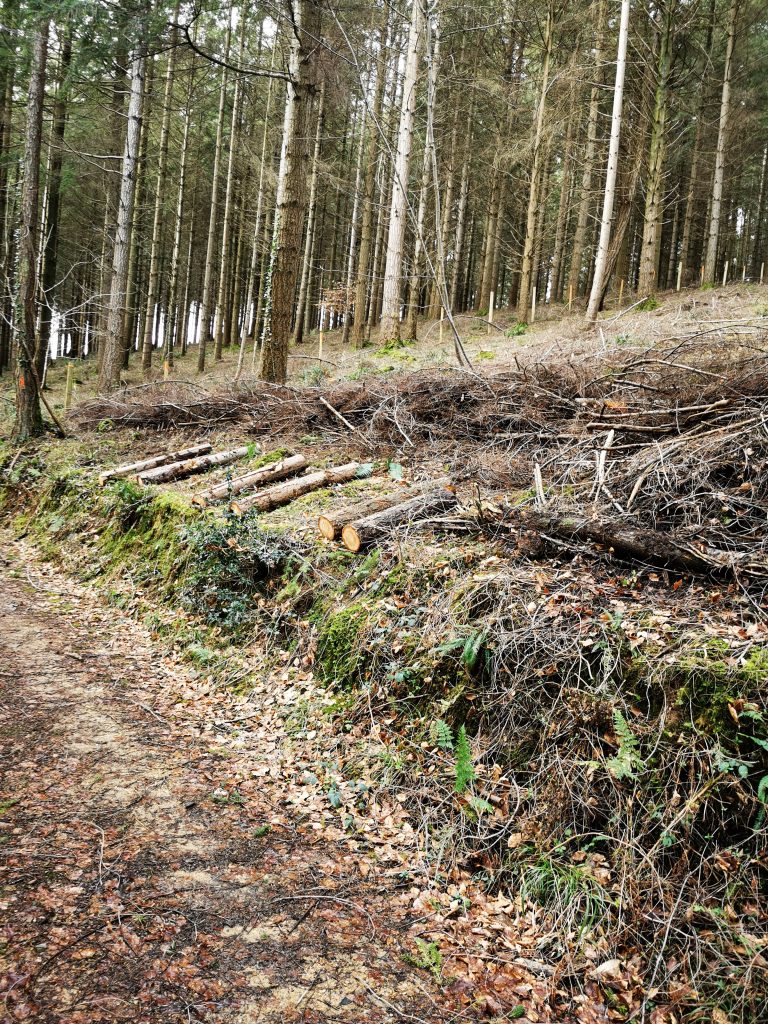
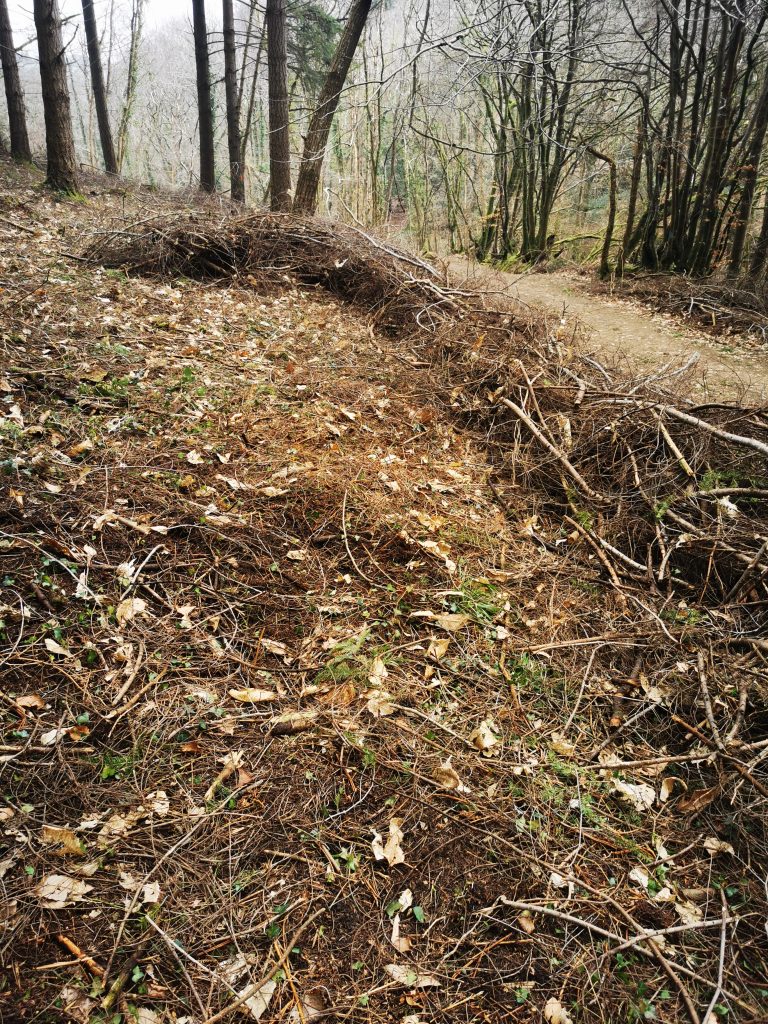
Birch Tapping
I tried this for the first time and with good success. There is only a small window of opportunity when the trees sap is rising. This is around March but there will be variations around the country especially North and South. It is normally a two week window. This can be done to Birch and Sycamore trees but you will need the land owners permission to do this. I made a small incision with a clean sharp knife and then inserted a wooden plug for the sap to run down. Another less intrusive method would be to cut the end of a small branch, something up to 10mm in diameter. From the sap you can make Birch wine, beer and syrup. I drank it from the tree and was pleasantly surprised. There is a risk of causing an infection to the tree so it is advisable to only use clean equipment. Once you have collected enough sap you can seal the incision with a smaller wooden plug. It is also advisable to leave that tree for two or three years before attempting it again, this will give it plenty of time to recover.

Woodcock
On the 11th March I discovered some Woodcock footage on the sd card. I normally only flush these birds so it was great to see one ambling around. The video footage is on our Woodland Wildlife Facebook page and you can find it in the tab headed videos. These Woodcock are non resident and only overwinter, more than likely from Europe.
Poplar
We planted 35 hybrid Poplar for biomass, these were Deltoides x Nigra. A few canes didn’t make it but the rest seem to be doing well. We planted these on the outer edge of our Douglas Fir.
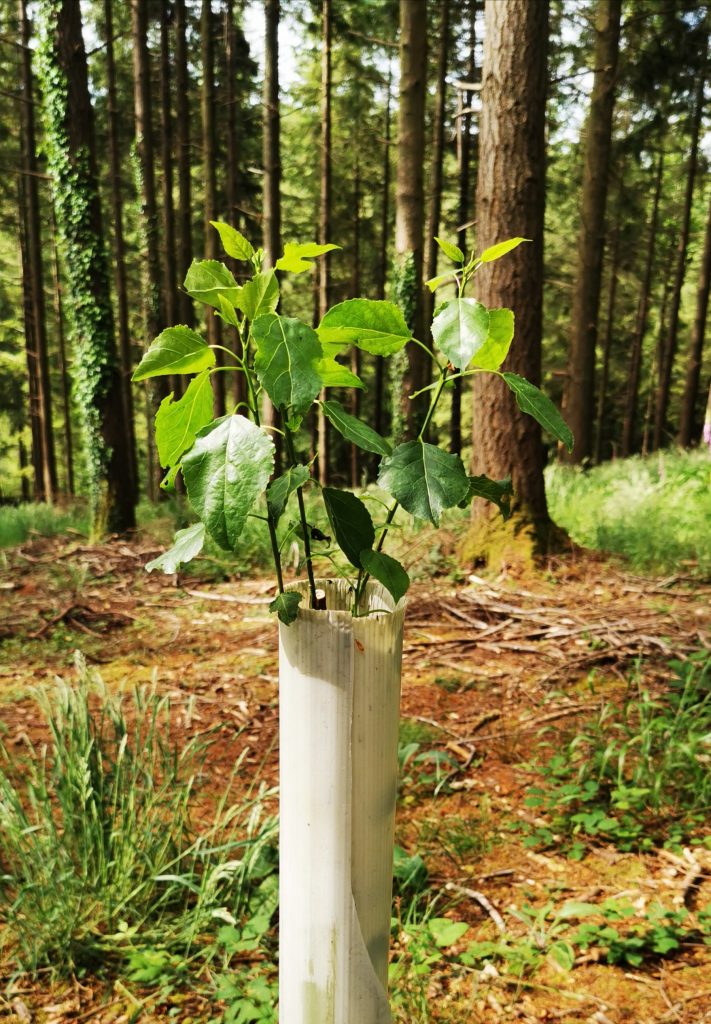
Wow moment
Whilst checking Badger cam footage on 4th April I was gobsmacked to see that a Goshawk had landed right in front of the entrance to the Badger sett. What a superb bird of prey, definitely one of my favourites. The video clip is also on our Facebook page.
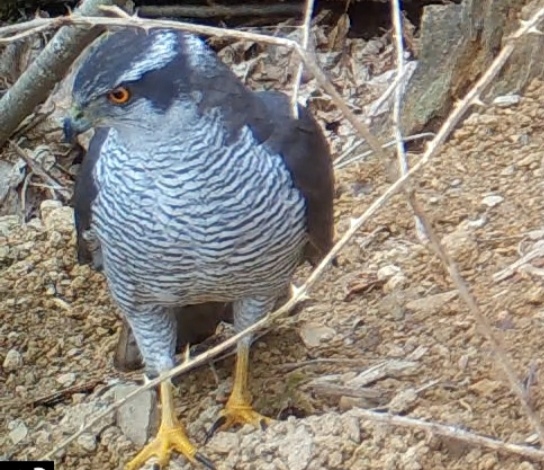
These amazing birds of prey will keep the grey Squirrel population in check within our woodland. The natural balance of species is great if it can be achieved.
No Nightjar
We had a few evening visits in May and although we never saw one we did hear a couple in the distance so I was reassured they were close by. What was amazing was that a Song Thrush had incorporated the Nightjar screech ( the one when in flight) within its repertoire. This was a clear sign to me that they must be in the area. We are hoping that they will return to our plot at some point in the future. We also heard a couple of Cuckoos and that is always an amazing sound.
Bat detecting
We invested in an Echo touch 2 bat detector which proved quite useful. I wish to learn a lot more about bats and especially the species that we have within our woodland.
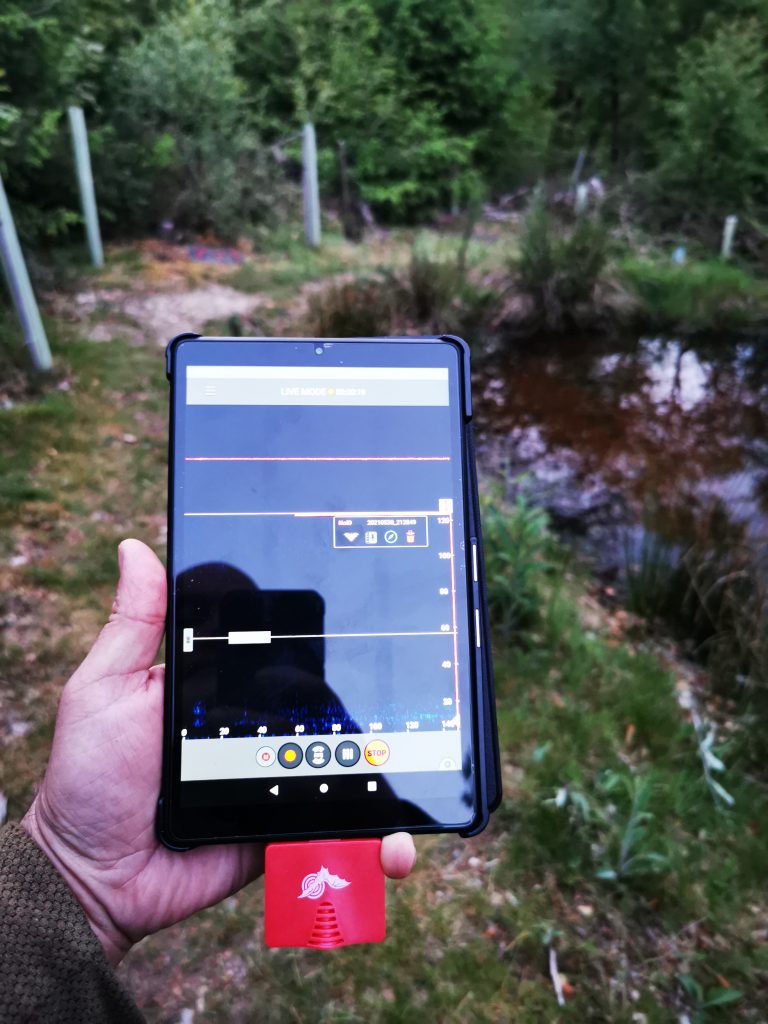
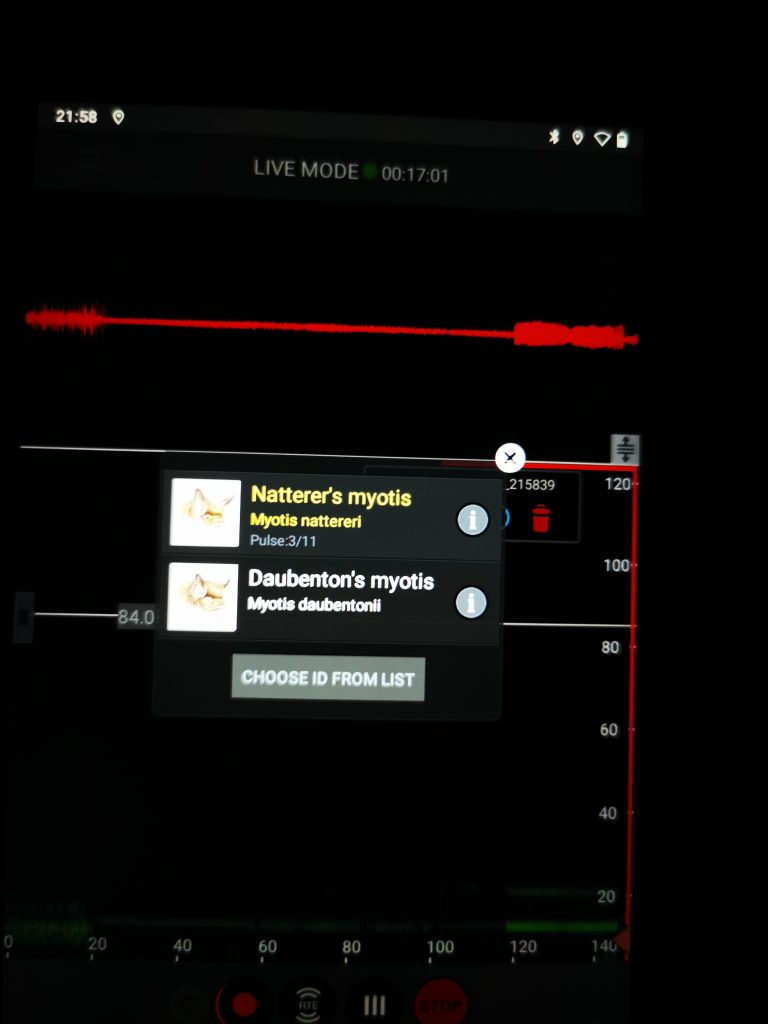
We managed to identify a few species, namely Natterers, Soprano Pippestrille, Common Pippestrille, Noctule, Lesser Noctule, Alcathoe myotis, Daubentons myotis and Western Barbastelle. The unit highlights the most likely species in yellow with a second possibility below in white. It’s great fun to use!
Rainfall
In May we also saw 261mm of rainfall which is exceptional. So much in fact that the top pond overflowed and beached some tadpoles. I managed to rescue most of them which I found astonishing, I never realised how resilient they were.

Fox cubs
Beginning of June we saw some fox cub footage. We reckon there were at least two different cubs with slightly different markings. However both of them sported a black spot half way up their tail.
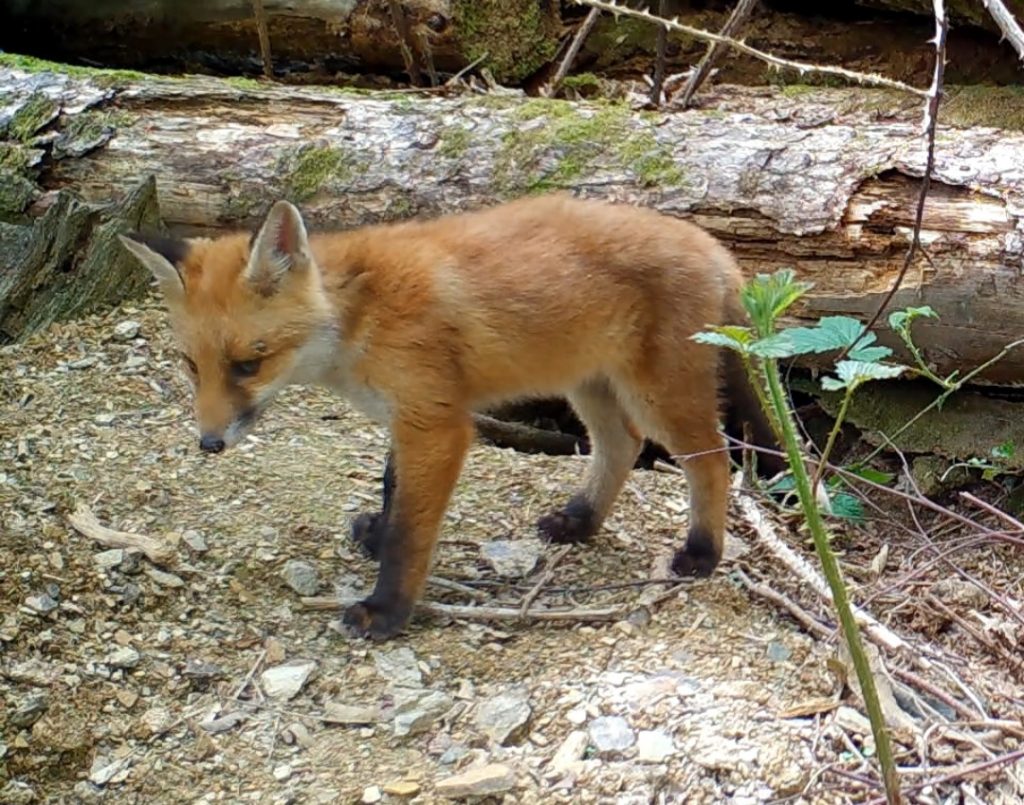
Fox cubs grow up very quickly indeed and unfortunately not all make it to adulthood. However a few weeks later I did catch one of them running across the Badger sett with what looked like a young rabbit in its mouth. Recently I have seen one of the cubs which is great news and it’s tail has gone completely black.
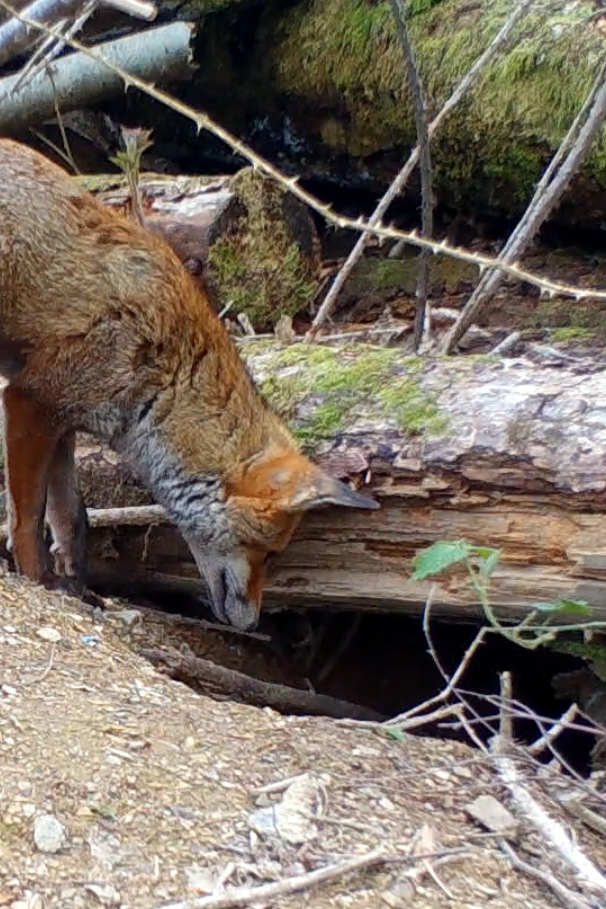
Douglas fir growth
After our thinning last year I decided to tag a random 30 stems in order to monitor their annual growth rate at dbh ( diameter at breast height). The trees were planted in 1969 and it appears that the larger growth rates are attributed to the larger trees. Most that are around 150cm to 200cm @dbh have grown between 2cm and 3cm in a twelve month period. Some of the smaller trees around 100cm to 150cm @dbh have grown between 1cm and 2cm over the same twelve month period. I am quite happy with this and find it quite fascinating.
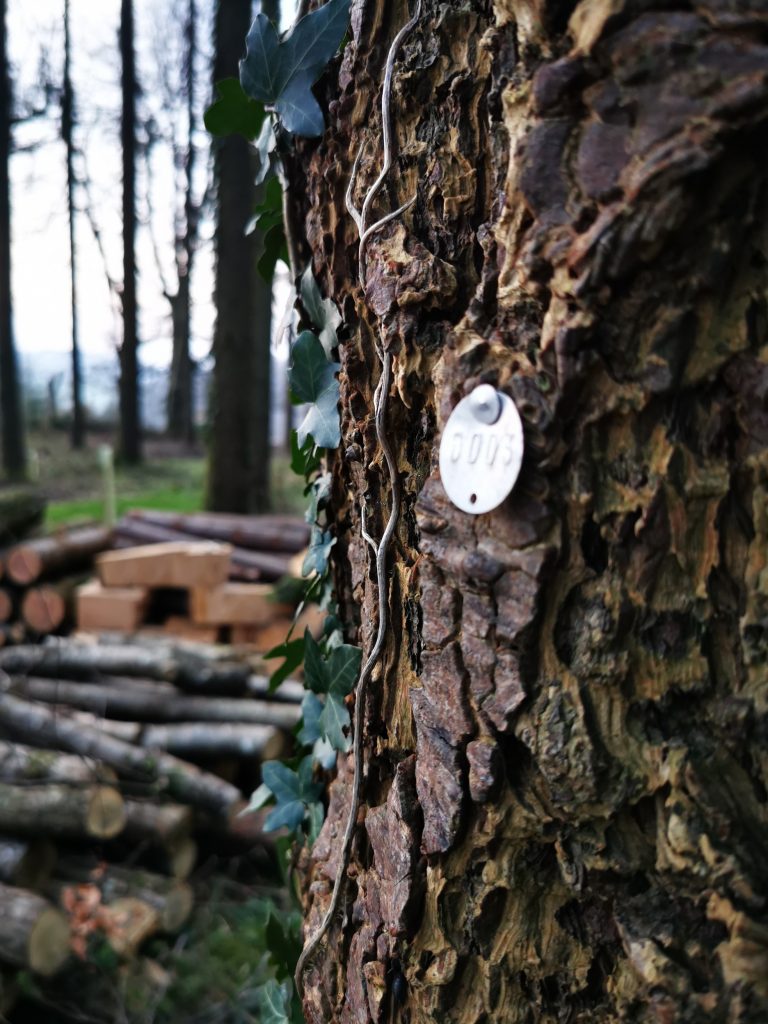
Green Tiger Beetle
We came across this species near the top pond. It’s a fast and ferocious predator and runs at speed across the ground hunting ants, spiders and caterpillars.
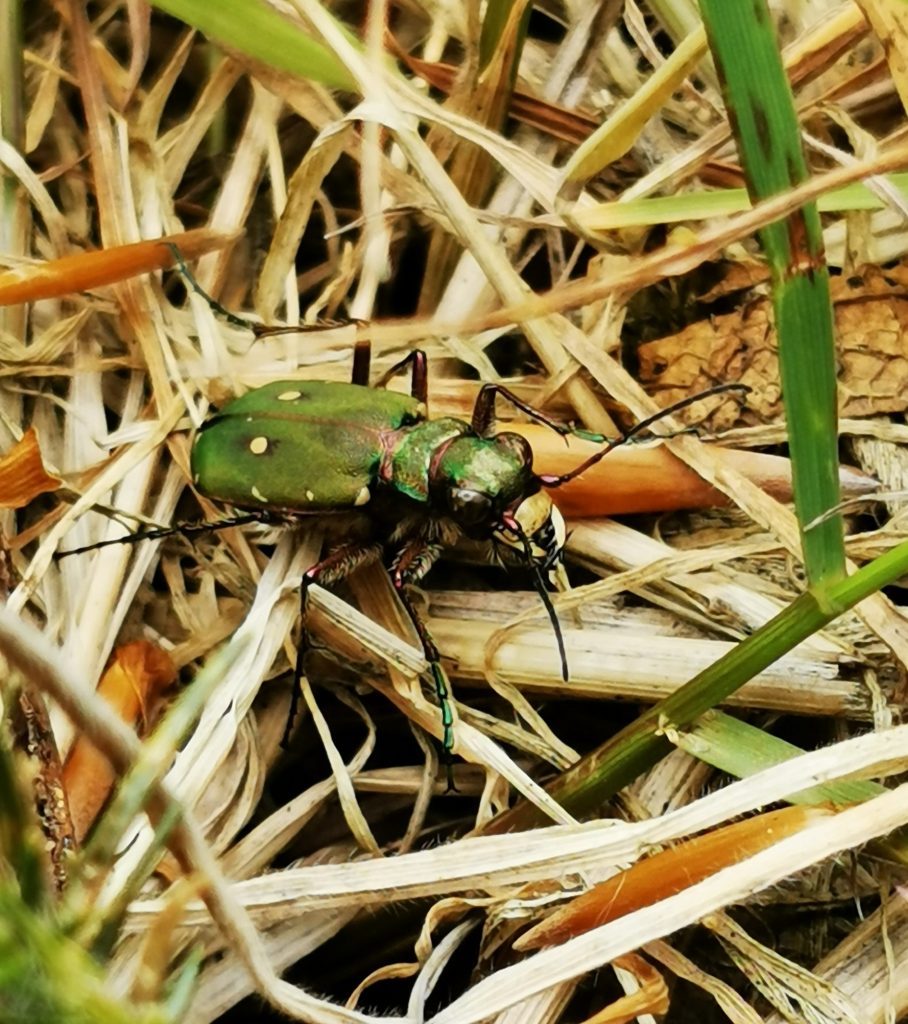
The Green Tiger Beetle is one of our fastest ground insects, although sometimes they may take flight for a short distance.
Spotted Orchids
Spotted Orchids appeared in the same place this year and came into flower in the last week of June. They are such a beautiful flower. I don’t find them anywhere else within my woodland so it’s always a treat to see them.
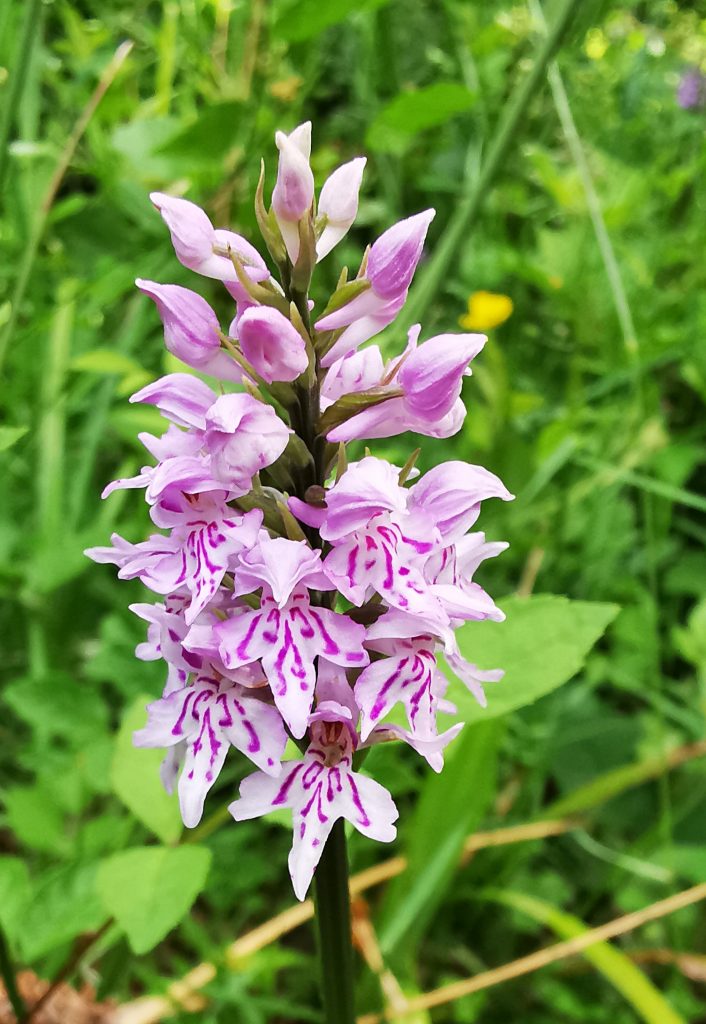
Markets
Our Woodland Wildlife market stall was very busy during the summer school holidays. We set up at Kingsbridge and Newton Abbot selling our own hand crafted items and also some Indonesian fair trade crafts. Although it was great to be busy it also meant I didn’t get down to our woodland as often as I would have liked. July is a particularly good month for observations, especially the butterflies. Although I was time limited which meant I didn’t get my normal allocation of butterfly photographs I did manage to observe a good amount of species. We had Large and Small Skippers, Marbled Whites, Wall Brown, White Admiral, Silver Washed Fritillary, Common Blue, Peacock, Gatekeeper, Ringlet, Meadow Brown, Comma and Painted Lady.
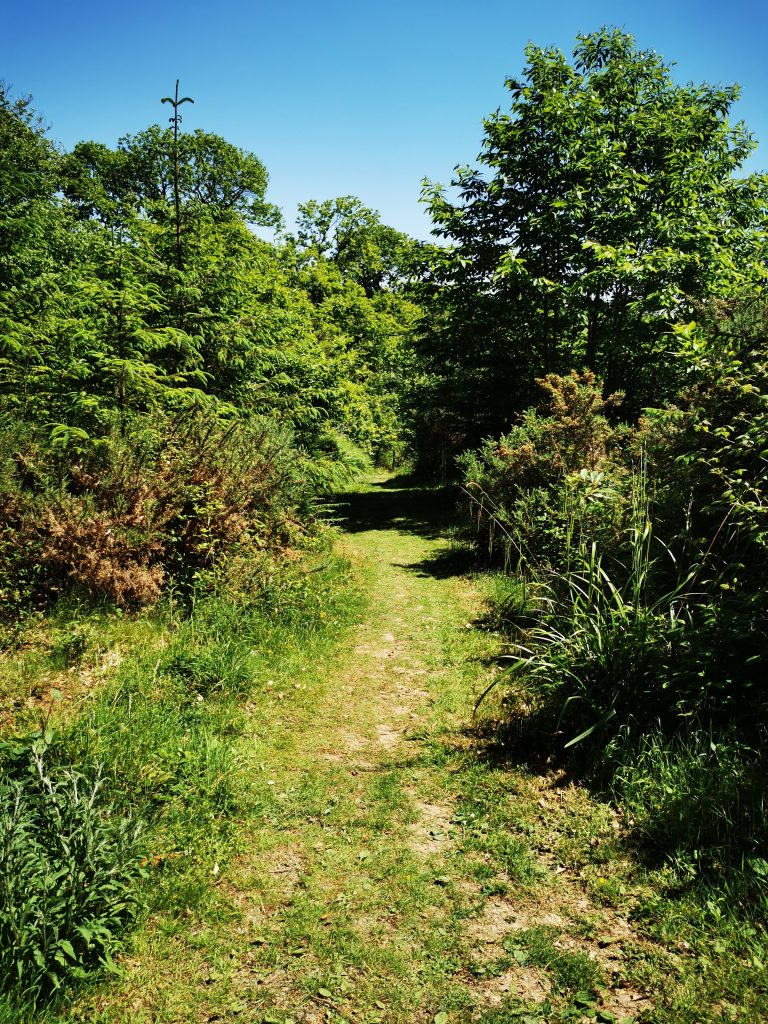
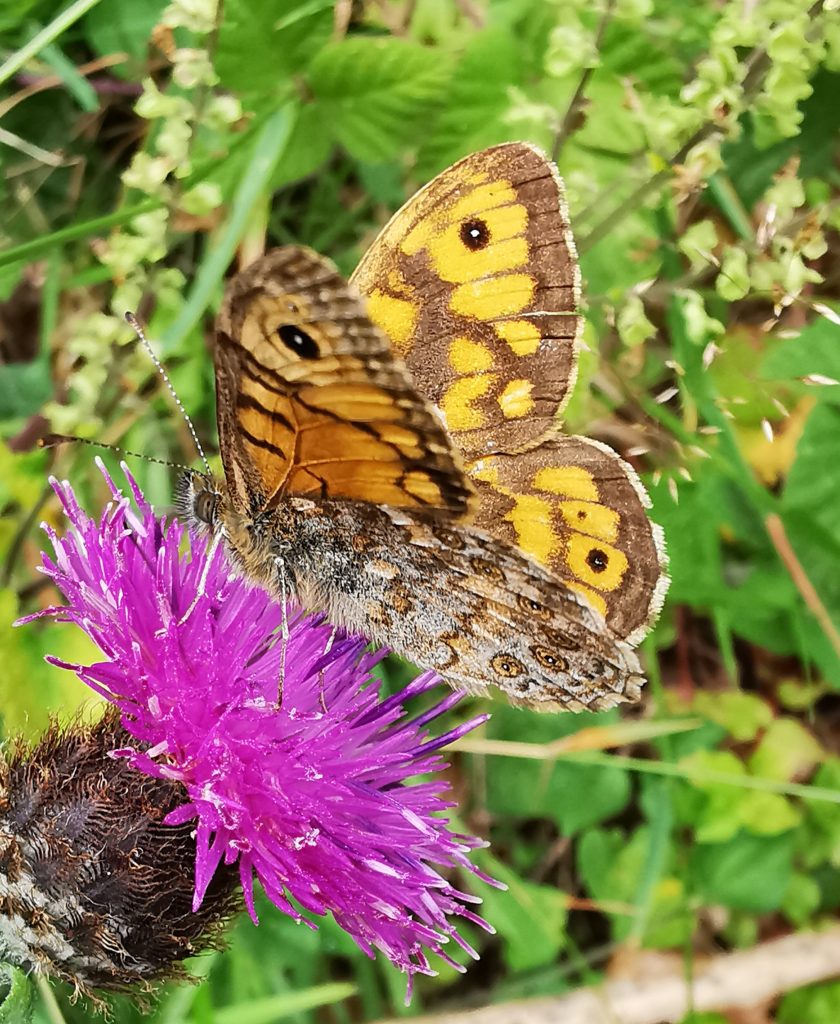
Amazing discovery
On 31st July we were amazed to find a pink Grasshopper, this particular one was very patient and obliging. They are quite rare and are a genetic mutation of the female nymph and generally within the Meadow Grasshopper species. The mutation is similar to that of an albino in other species. It was a great find indeed.
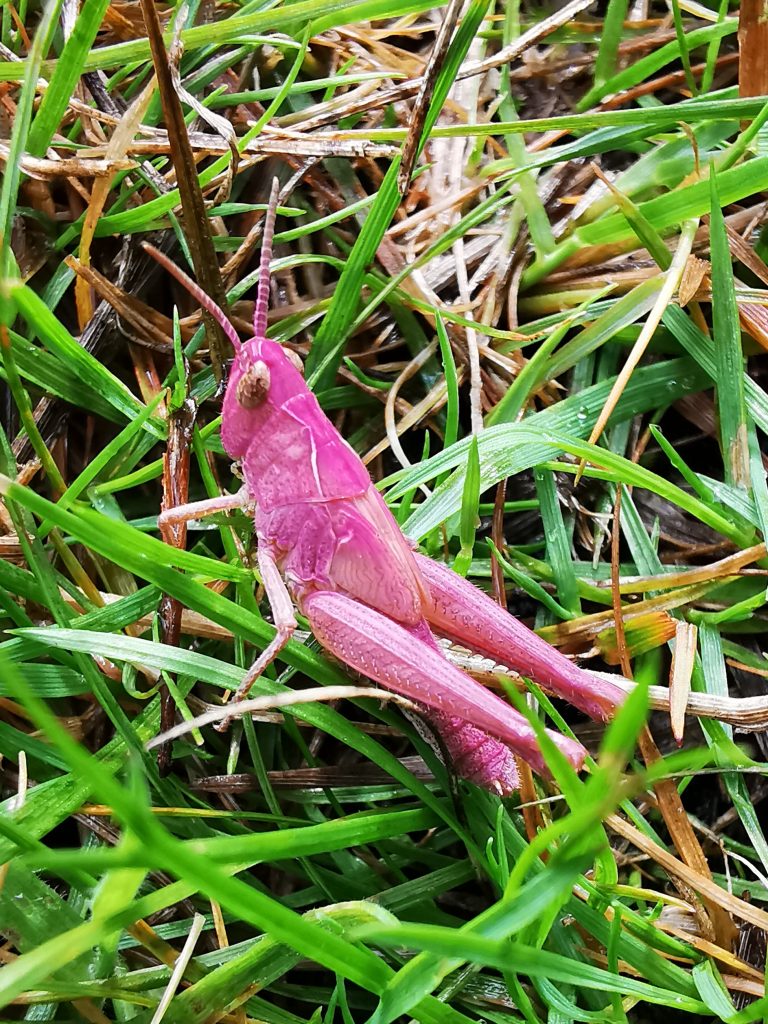
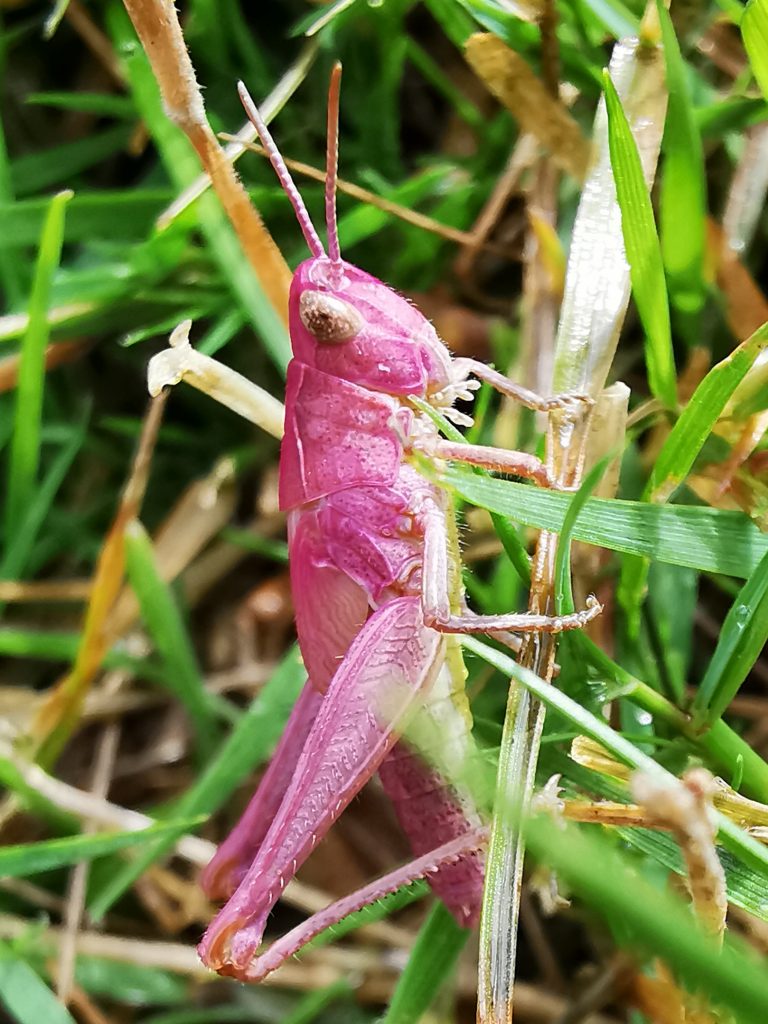
Unfortunately these mutations tend to get predated before they get chance to breed. Two weeks later I found another one in a different part of our woodland. This one was smaller and at an earlier instar stage. I spent a considerable amount of time with them and was reluctant to let them go back to their almost certain fate. My only conclusion is that because we probably had tens of thousands of grasshoppers it is the law of averages that we would have a few mutations. It caused a mini media frenzy but most just wanted to exploit my photographs with no guarantee to even mention our project, so I declined their requests.
Spotted Flycatchers
These stunning birds returned to our plot again this summer and like the butterflies they also seemed later than usual to arrive. I managed some great footage off my phone when one flew in quite close. This footage is also on our Facebook page.
Golden Ringed Dragonfly
What a year its been for this species in our woodland. I have never seen so many. They certainly enjoyed basking in the afternoon sun in our newly created glade. Watching the aerial battles and manoeuvres of the dragonflies are amazing and their turn of speed is breathtaking.
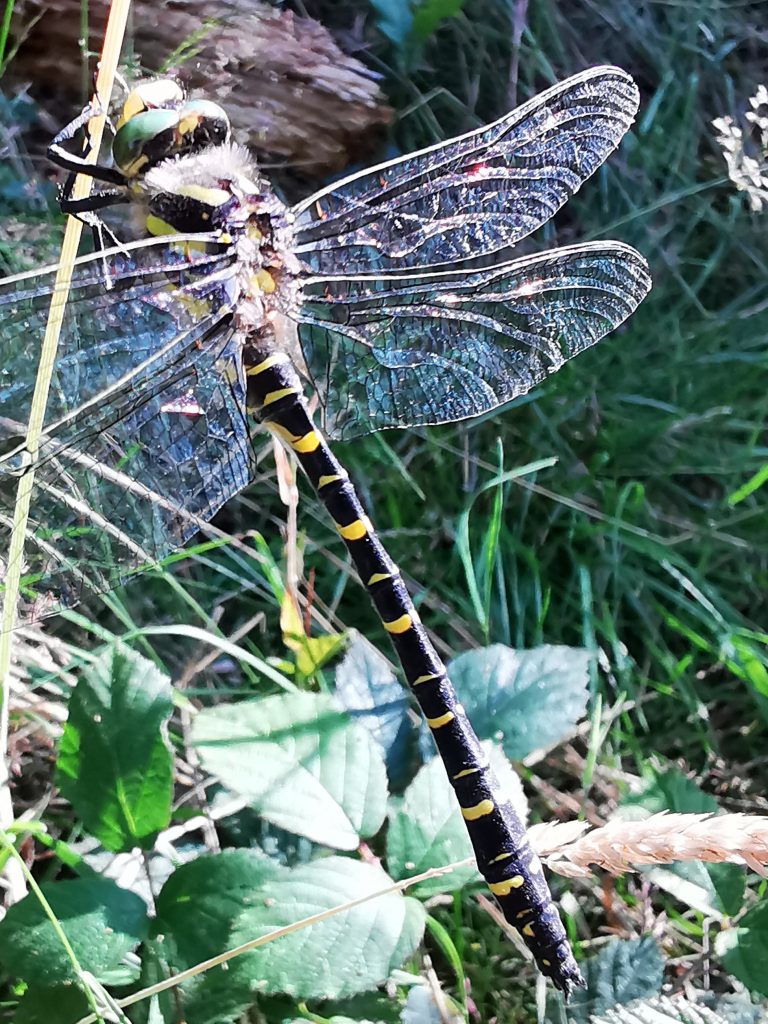
Autumn/winter 2021
After some amazing observations this summer our thoughts now turn to our autumn and winter projects. We have a large list of projects for this winter including more coppicing, maintenance of rides and glades and removal of more young Sitka spruce. Care will be taken where all the new Heather growth has occurred. I flagged these plants so that when they aren’t in flower I don’t accidently strim them, and it’s working well. Both the Bell Heather and the common Heather are spreading nicely. Hopefully we have a busy spell with our markets leading up to Christmas, we certainly have some great gift ideas for people. I really enjoy the physical aspect of being a Woodland owner because it is superb exercise for me but also the work we do will have a major positive impact on our woodland and its wildlife.
Results
I am sure we can now say that after over 3 years we are now seeing the benefits of our management practices. We are seeing an annual increase in frog and toad numbers, we are seeing an increase in grasshoppers and Dark Bush Crickets ( yes they returned too), the Heather areas are slowly spreading and more dragonflies are being observed.
Our philosophy is that if you help the invertebrates everything else falls into place.
I will finish with some more pictures from this summer. This blog is just a snapshot of the summer. I post on our Facebook page every day so if you want to see our project and observations in more detail please like or follow Woodland Wildlife on Facebook.
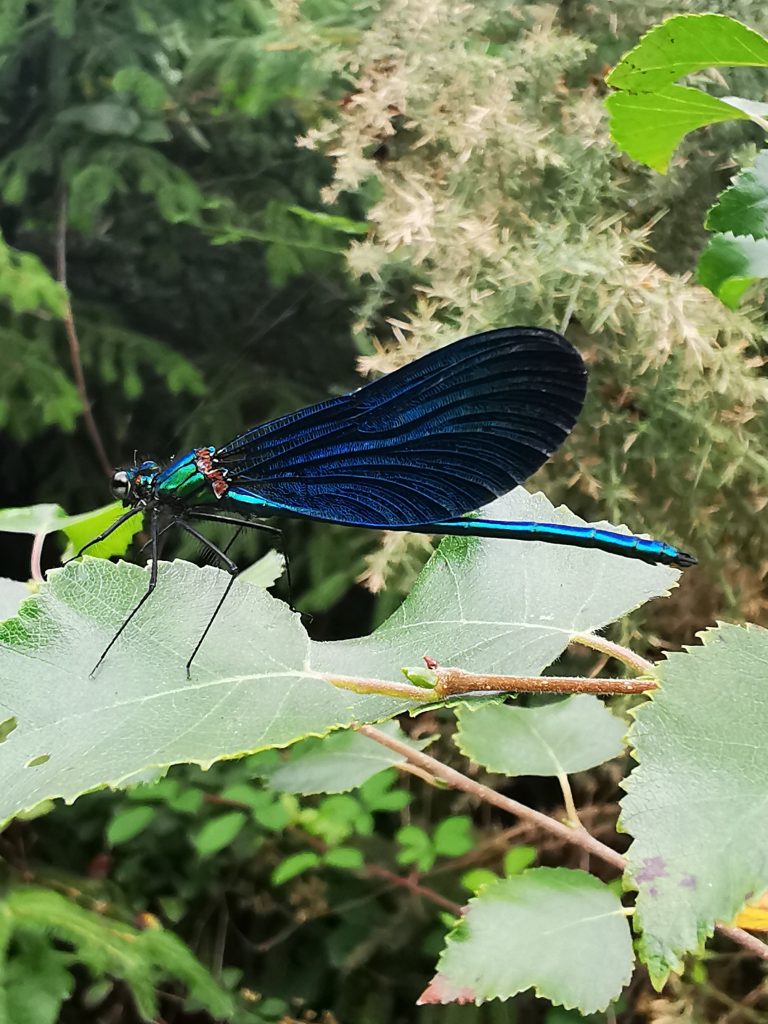
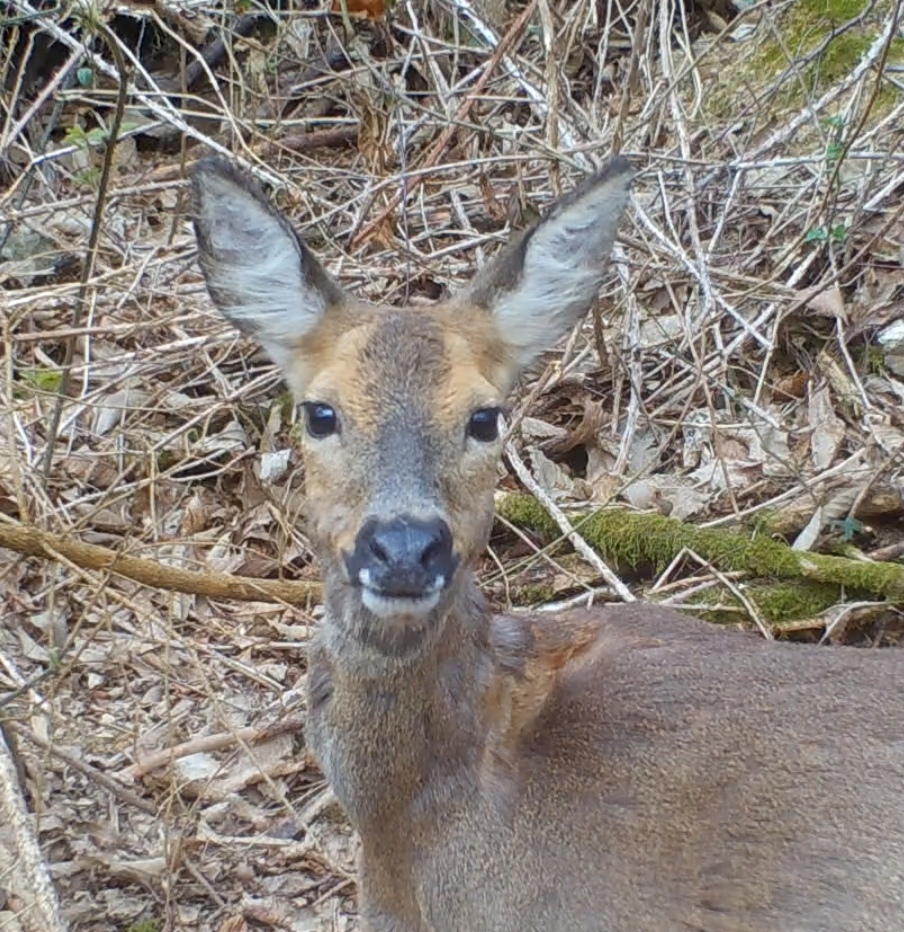

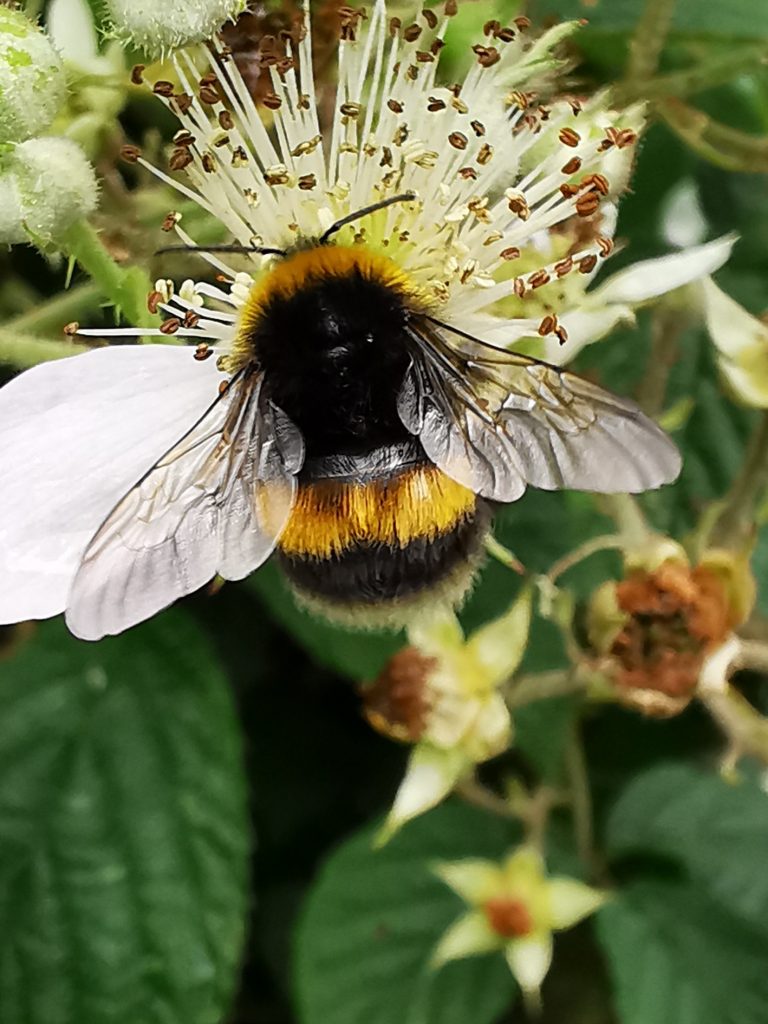
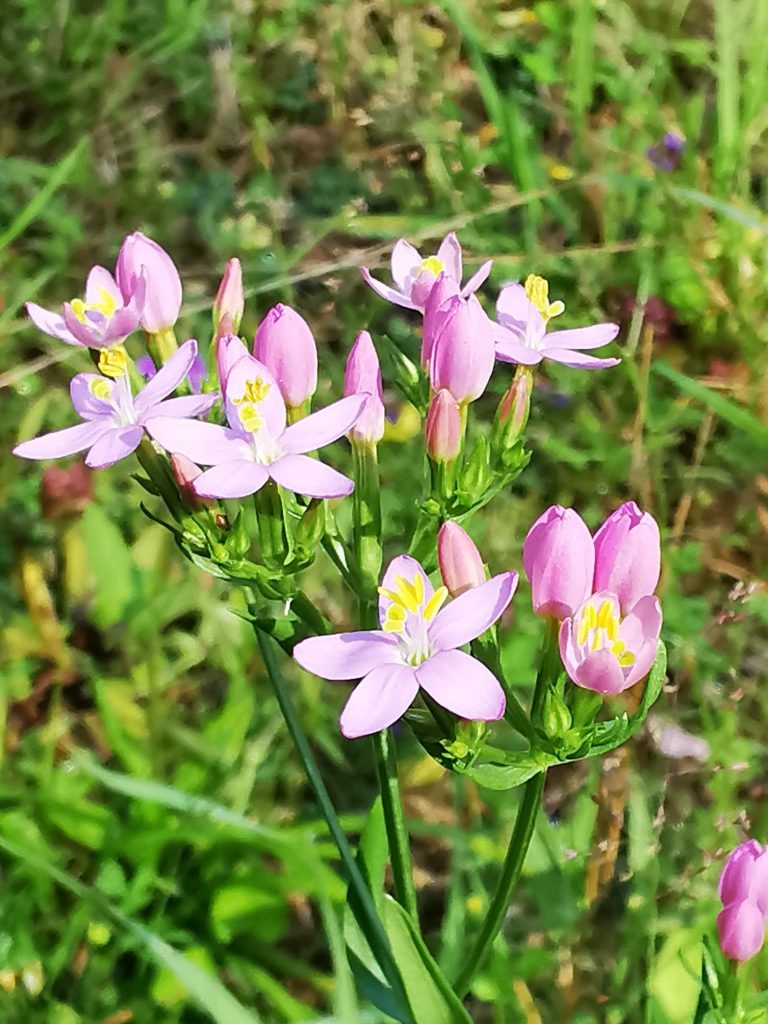
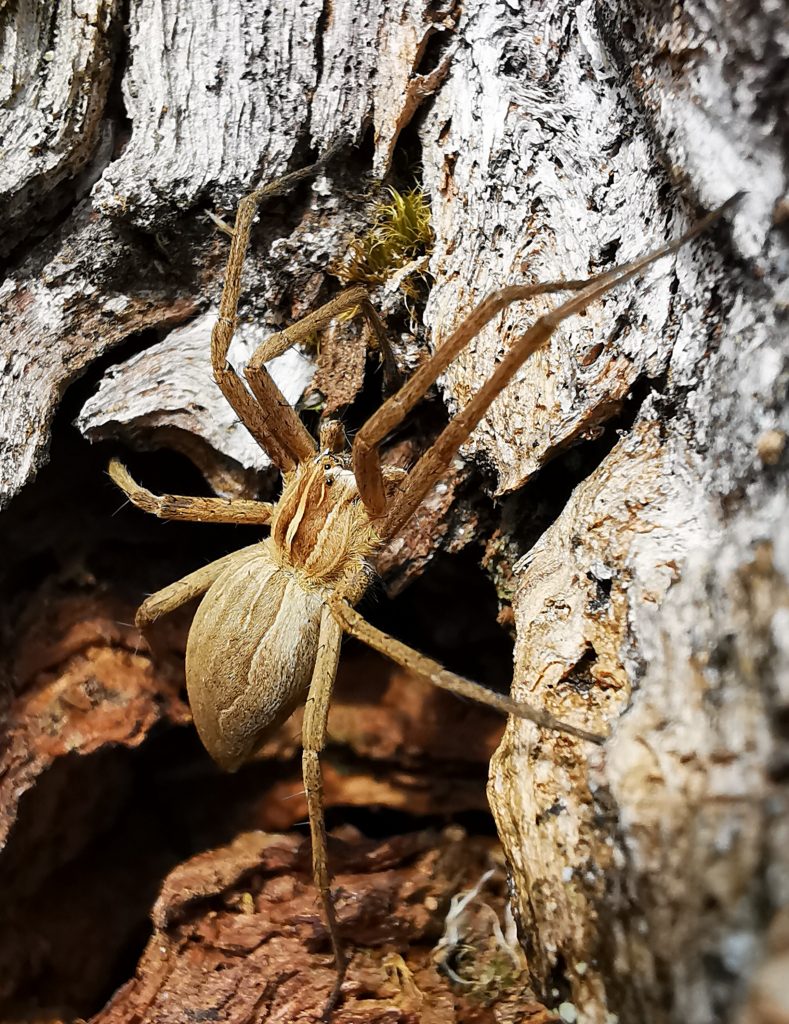
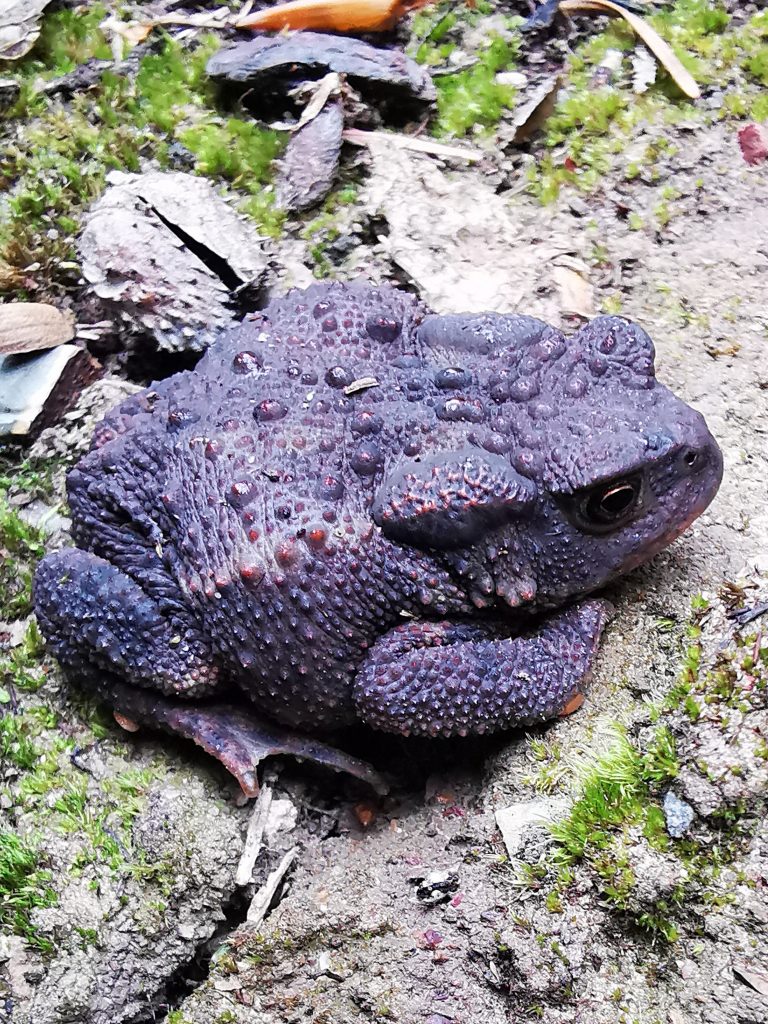

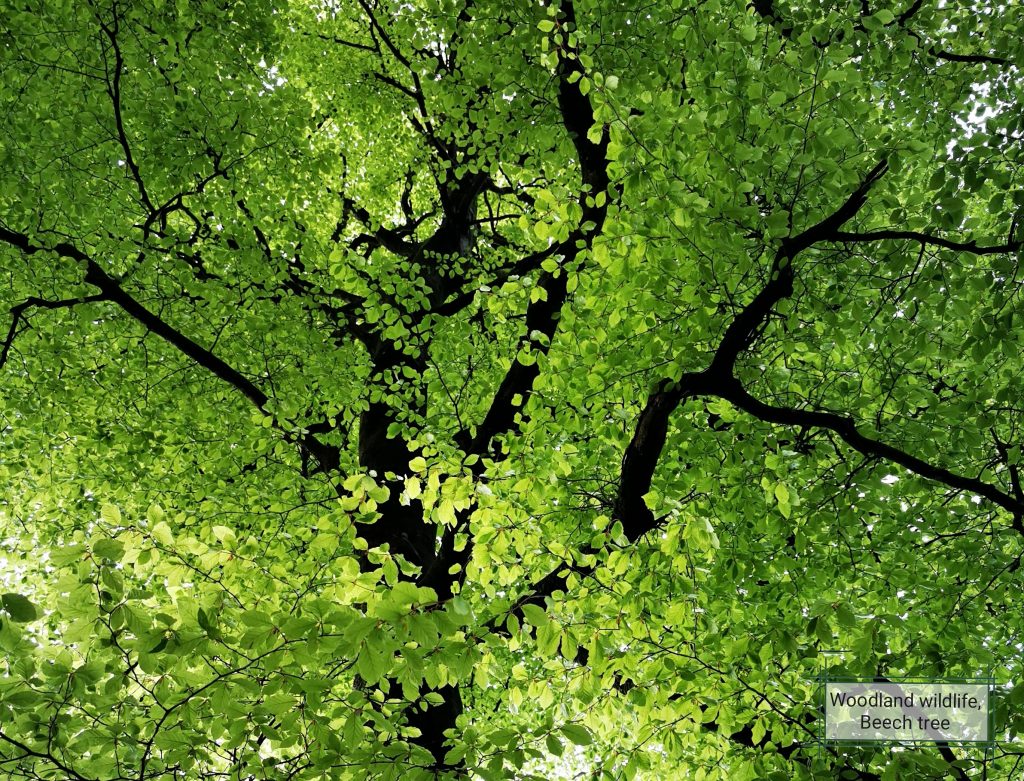

Yours in nature.
Steve and Tamara.



